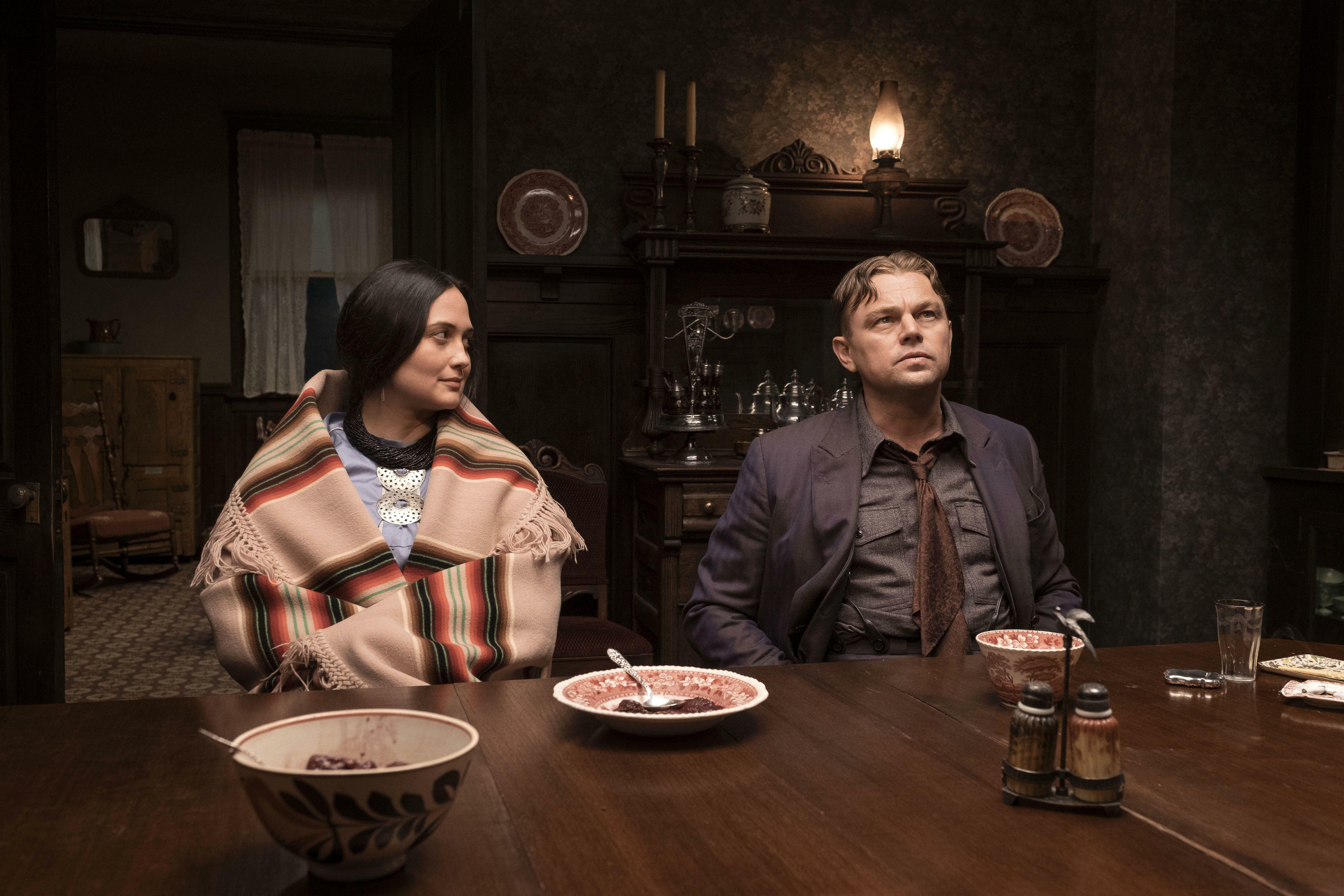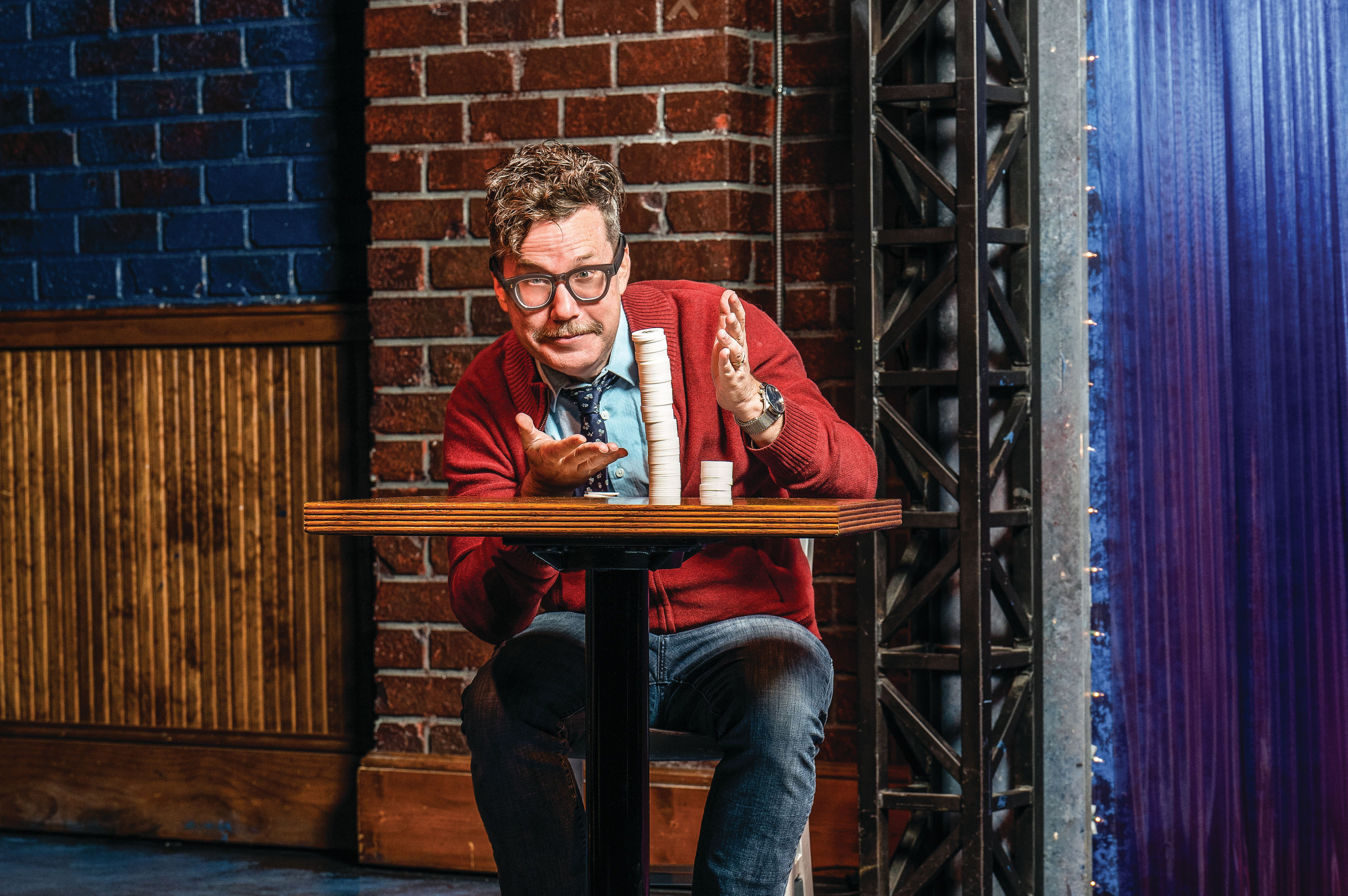Oh, Florida!
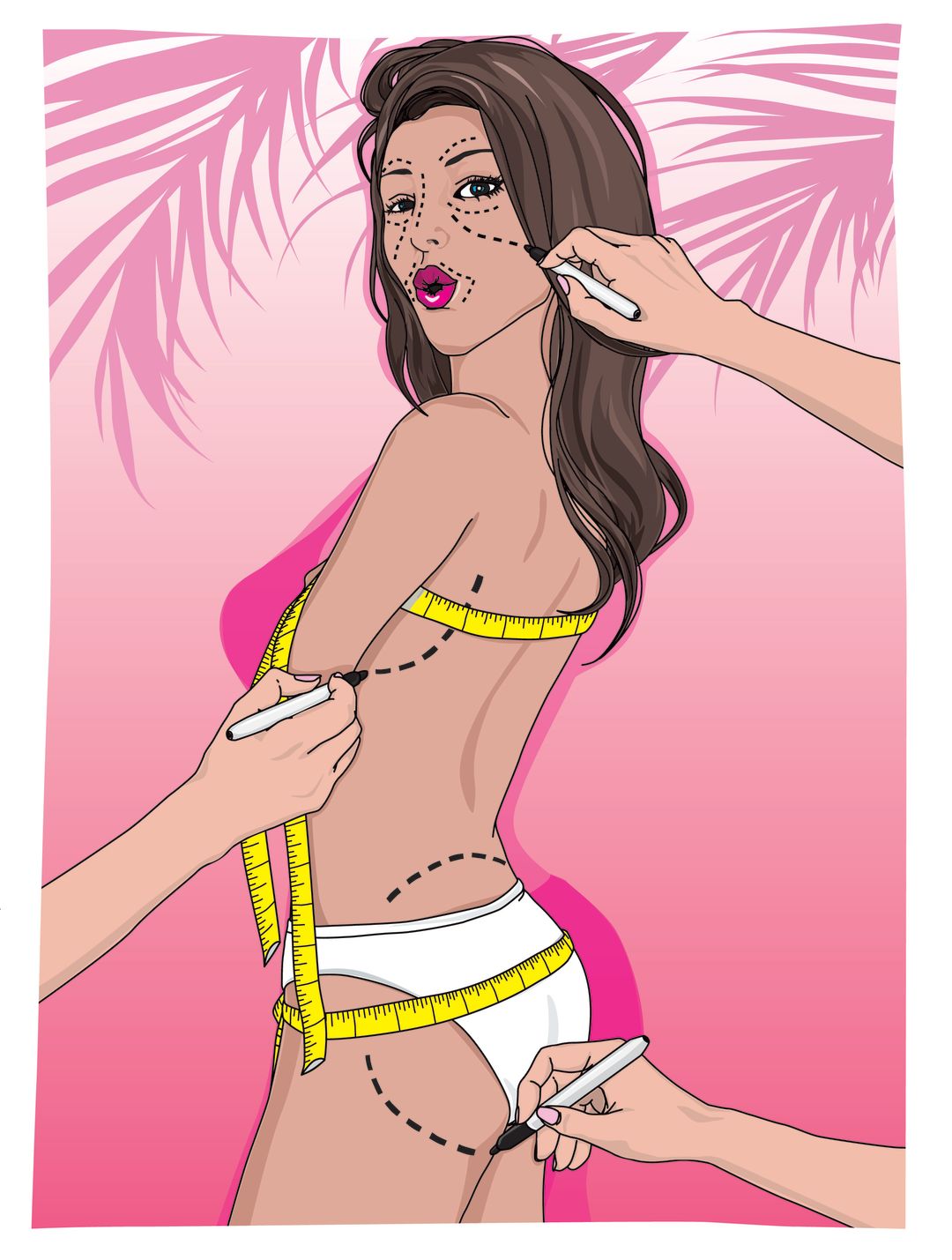
Image: Daniel Chen
We love our doctors in Florida. They’re not just healers. They’re also important economic engines. Until recently, the doctor who topped everyone else in the country for billings to Medicare was a Palm Beach County ophthalmologist named Salomon Melgen, who collected $21 million in 2012. Imagine what a trickle-down boon that was for all the luxury-car dealers and private jet maintenance workers! Unfortunately, Dr. Melgen’s run at the top came to an end when he was indicted in 2015 for both Medicare fraud and bribing a Democratic senator from New Jersey.
Florida reveres its doctors so much that one of the two statues representing Florida in Statuary Hall in Washington is of an Apalachicola physician. Dr. John Gorrie, who was looking for a way to cool down his yellow fever and malaria patients, is credited with inventing a precursor of air conditioning. He patented his system in 1851 and was promptly hailed by his contemporaries as a crank and a fraud. People lived in Florida before air conditioning, but not many. It’s hard to imagine anyone living here without Dr. Gorrie’s invention now, especially around, oh, say, Aug. 1.
Today, though, the Florida doctors we celebrate are trying to make their patients hotter, not cool them down. Plastic surgery is so popular in Florida that as of 2010, there was one plastic surgeon for every 39 residents. That’s the third most plastic surgeons per capita in the country, behind the District of Columbia and Maryland. (Who knew congresspeople needed that much touching up?)
These operations are supposed to be life-improving. Sometimes they’re also lifesaving. In 1993, a 30-year-old stripper from Joe Redner’s Mons Venus club in Tampa got into a squabble with her 75-year-old sometime boyfriend. He pulled out a pistol and shot her in the left breast.
“My doctors say my implant saved me,” the dancer said from her hospital bed. “They said if I didn’t have that, I’d be dead. That is scary.”
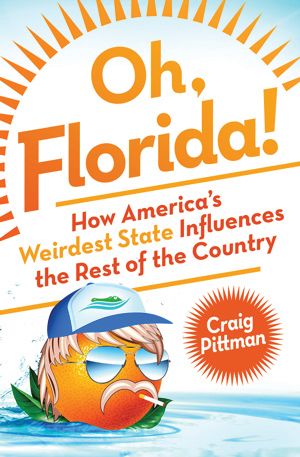
From Oh, Florida: How America's Weirdest State Influences the Rest of the Country by Craig Pittman. Copyright 2016 by the author and reprinted with permission by St. Martin's Press, LLC. $26.99; for info on buying the book, go to us.macmillan.com/books/9781250071200
You could call it a fluke, except that in 2012, something similar happened. A 41-year-old woman in Melbourne who had spent $6,000 on an enhanced bosom got into a confrontation with her ex-fiancé’s new girlfriend and was stabbed several times in the left breast. Doctors said the implant had just enough saline in it to stop the knife from piercing her heart. Clearly, Florida’s plastic surgeons are doing some highly creative work if they’re incorporating Kevlar and chain mail into their implants.
One Florida plastic surgeon has done more than any other to spread the word about all the astonishing bodywork going on here. Dr. Michael Salzhauer, aka “Dr. Miami,” posts clips on Snapchat of him chatting about his work during surgery, and before-and-after photos on Instagram. Despite the gruesome visuals, his broadcasts reach about 100,000 followers who are apparently fascinated by Brazilian butt lifts, with another 125,000 checking his Instagram posts. To him, such avid fandom makes perfect sense.
“In every aspect of our lives we try to do better. Build nicer houses, build nicer cars, become smarter,” he said. “Why not have better bodies?”
Some of Florida’s form-fixing doctors are so well known they draw patients from other states, a practice state officials have termed “medical tourism,” which they would like to encourage. Wealthy folks who live elsewhere announce a Florida vacation, fly down, see the doctor for a touch-up, then return home after the scars heal and talk about how delightful and relaxing Florida was. Florida plastic surgeons are so eager to treat these folks that they’re willing to make house calls not only at their mansions but even yacht calls.
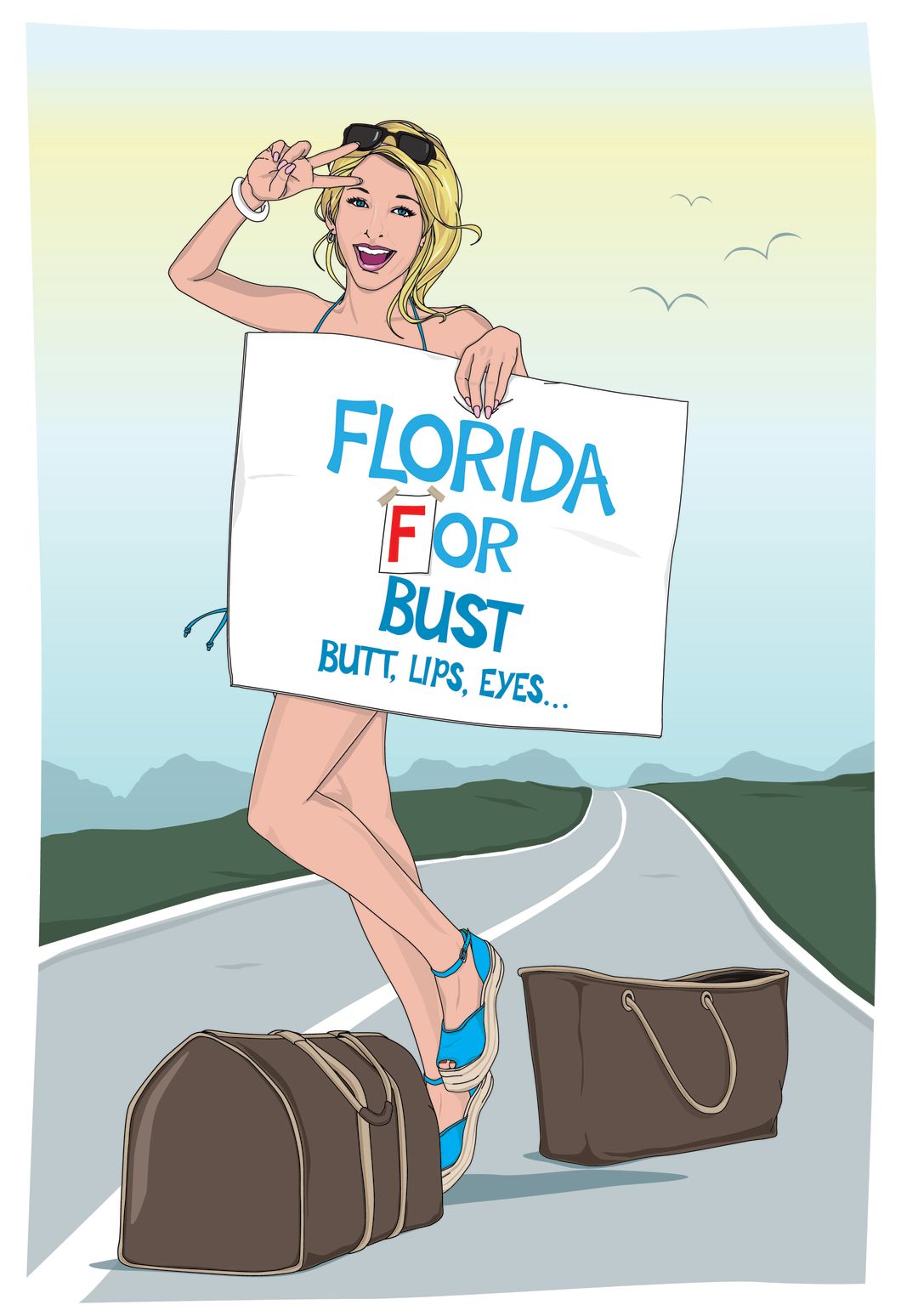
Image: Daniel Chen
The traveling customers get more than just treatment on the QT. They get treated by the top docs in the field. As one prominent surgeon indignantly told a Miami newspaper after he was sued for malpractice, “I’m known worldwide for my work on the buttocks.”
Of course, not everyone who wants a little work done can easily afford the services of a worldwide expert on whatever body part needs buffing. For the true Floridian, that’s a challenge to be met with a little creativity. I am thinking here of the young woman from Pensacola who, in 2013, made headlines by standing by a busy road waving a sign that said, "Not Homeless Need Boobs." She didn’t tell reporters how much she raised panhandling in the Panhandle, just that people had been far more generous than she had expected.
Another approach is to fake it—to use a false front, as it were. That was the approach tried by a 21-year-old Tampa woman who called herself Jasmine Tridevil. In September 2014, she announced that she had paid a plastic surgeon $20,000 to create a third breast, and had hired a camera crew to film her every move so she could convince MTV to make her a reality star.
Some media outlets took her word for what she said had happened and sent her story and photo spinning around the globe. Other reporters discovered that her real name is Alisha Jasmine Hessler, and that her luggage had been stolen from the Tampa airport the week before. A police report noted that when the suitcase was returned to her, inside was a “3 breast prosthesis.”
Although she insisted her implant was as real as any implant can ever be, reporters couldn’t help noticing that the website for Hessler’s massage business featured this slogan: “Provider of internet hoaxes since 2014.” Clearly her ambition had outpaced her expertise.
When it comes to prosthetics, why stop at faking just one body part? Why not fake the whole body? One night in 2006, a Wildwood carpenter named Chuck Ramos, his business idled by the recession, stumbled on a TV show about the woes of men who could not afford the $25,000 price of gender reassignment surgery. Some, in despair, committed suicide. Ramos saw a way to help them and make some money, too. He created woman-shaped silicone suits that men can wear. He called them “FemSkin.” The upper body is molded from a German woman’s body, while the bottom is molded from a Brazilian woman’s body. The suits cost between $1,000 and $2,000.
“FemSkins are very soft, strong and elastic,” it says on femskin.com. “Tight and stretchy like pantyhose, they are silky smooth and will shape your body for a sexy female form.”
“Form” is the key word there. The wearers don’t really look like women. They look like blow-up dolls that the Blue Fairy has touched with her wand, so they come to life and walk (awkwardly) and talk (in a muffled voice). British TV produced a documentary about the phenomenon, calling it Secrets of the Living Dolls.
Chuck Ramos lived just long enough to see his suits start to sell, then died of liver cancer. The company he started is still in business, though. It’s run now by his three sons and by his wife. Her name is—are you ready for this?—Barbie.
Craig Pittman is an award-winning journalist for the Tampa Bay Times and the author of three previous books. Oh, Florida! grew out of his popular Twitter hashtag and a blog by the same name he wrote for Slate in 2013.


